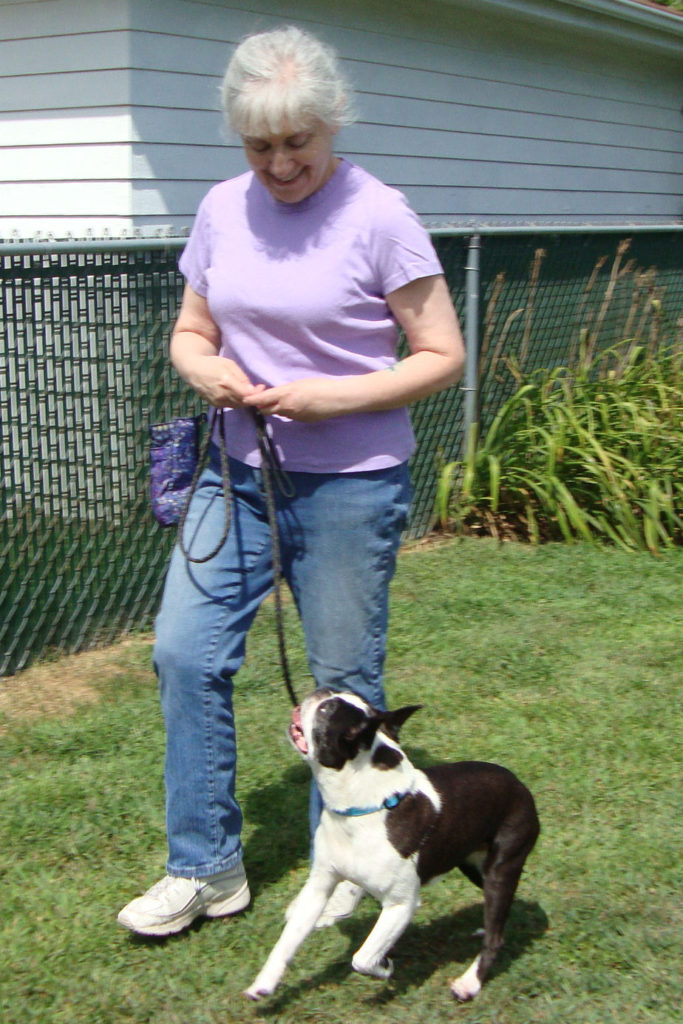One of the most wonderful things about dogs is you can tell your dog anything. Whatever you say, they’ll think it’s fascinating, wonderful, and amazing. Dogs love it when you talk to them.
The more you do, the more words they’ll understand. Who doesn’t have a story about the words you have to spell out loud so your dog doesn’t get too excited? Is that magic word “Walk” in your house? In ours its “Wannagwout?”
Dogs are capable of learning the meaning of hundreds of words. It’s up to you to teach them.
Tell your dog everything

There’s no reason to be shy about talking to your dog. If you’re a quiet person who doesn’t say much when you’re alone with your dogs, give it a try. If you don’t really have anything to say, just describe what you’re doing or your plans for the day in a conversational tone. When you’re out on a walk, or running errands with your dog, keep up the dialogue. Even if somebody sees or hears you, they’ll assume you’re on the phone, not a crazy person talking to your dog.
Talking about phones, many dogs react rudely when their people actually do talk on the phone. One of the reasons is because they’re not used to it. You can mimic a phone conversation to train your dog how to act when you pick up the phone. Decide what behavior you’d like, and make it into a training game. Test your phone’s ring tone, tell your dog “Place!”, and reward. If you give your dog something to do when your phone rings, they’ll be less likely to bother you.
Give them the words
Anything you need or want your dog to do can be easier if you make it a training game. In the last couple of weeks, we taught our dogs a new behavior, just by naming it.
It started when a baby bunny decided our fenced yard was a great place to nibble on grass. Since we don’t want our dogs catching the bunny, we started putting on their collars and leashes before going out – even in our own yard.
The dogs would rather be naked in the yard as well as the house, so there was some reluctance and backing up when we showed them their collars. Instead of chasing them around to put on their collars, we turned it into a training game.
It was easy to do, and the dogs all learned in a couple of days. The game was to hold out the collar, say “Collar!” and reward all the little steps: looking at the collar, sniffing the collar, laying their throat on the collar, clasping the collar, opening the collar. Since they’re all familiar with collars to start with, there was no resistance or fear. But there were lots of treats.
Let them know what’s going on
Now when we say collar, our dogs stand and stretch their necks so we can put on their collars. To keep the value of the behavior, we still reward it. Maybe not every time, but often. And especially when they were busy elsewhere and come running over when we say “Collar!”
Just telling your dog what’s going on can make the difference. If there’s something your dog is reluctant to do, think about how you can turn it around. Use your words and your treats to change anything into a game your dog will want to play.
